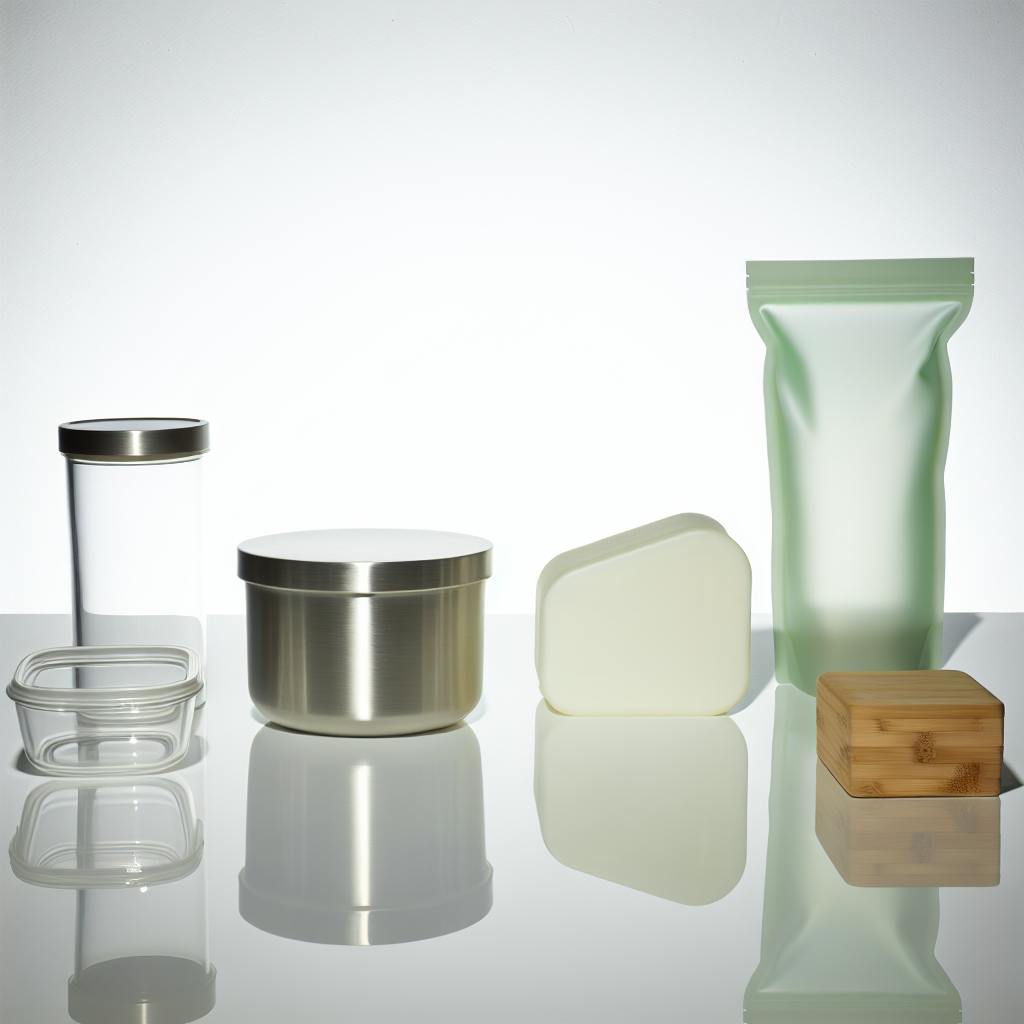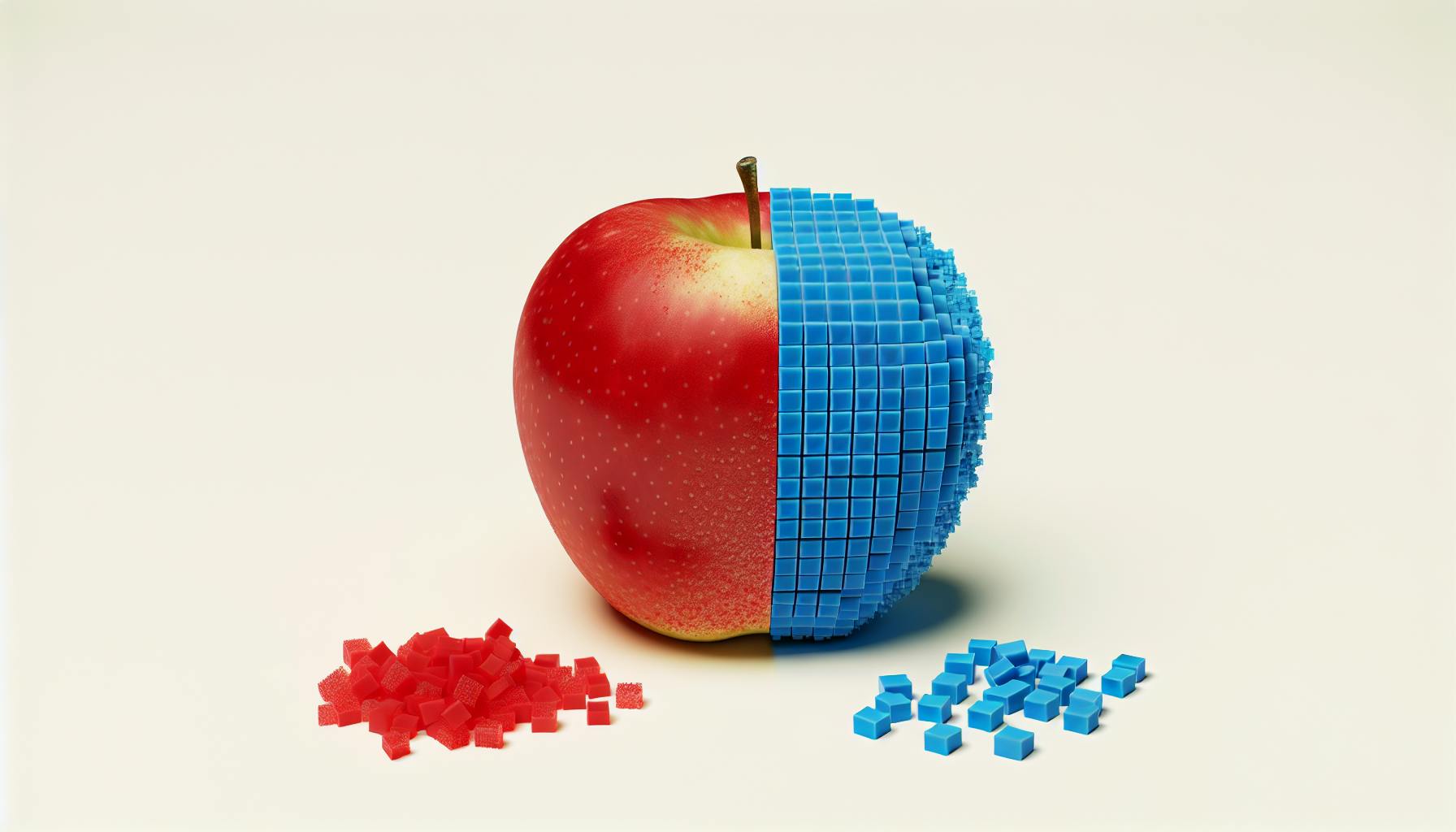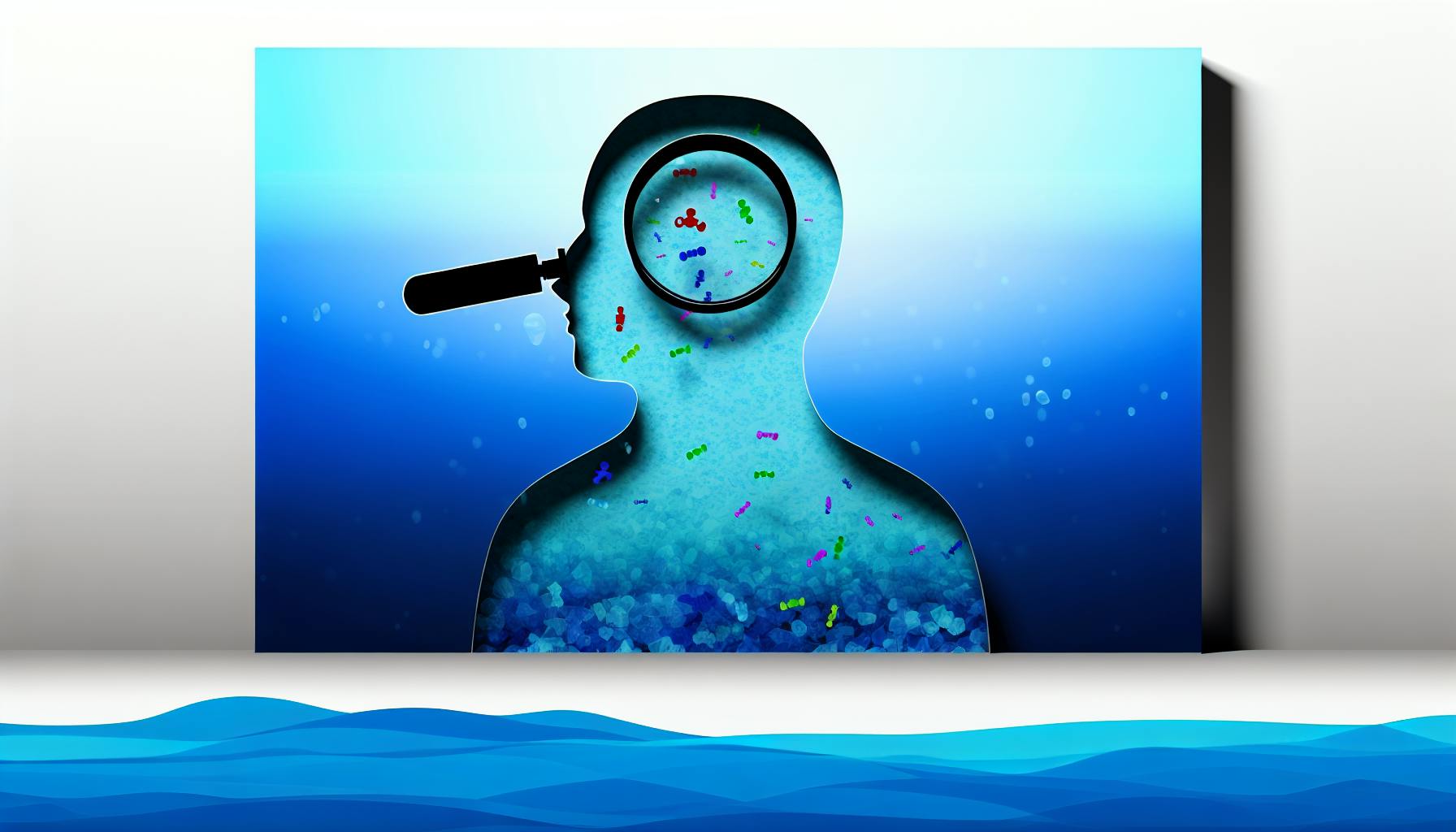Plastic food containers like Tupperware are convenient, but studies show they can release tiny plastic particles called microplastics and nanoplastics, especially when heated or stored for long periods. These particles can enter our food and bodies, potentially causing inflammation, cell damage, and hormone disruption.
To minimize exposure:
- Avoid microwaving plastic containers - Use glass or ceramic instead
- Discard damaged plastic containers with cracks or scratches
- Do not reuse single-use plastic containers
- Avoid putting plastic containers in the dishwasher
Safer alternatives:
| Material | Benefits |
|---|---|
| Glass | Does not release harmful particles or chemicals |
| Stainless Steel | Does not react with food, durable, lightweight |
| Ceramic | Made from natural materials, smooth surface |
Reduce plastic use by:
- Minimizing single-use plastics
- Bringing your own reusable containers
- Supporting sustainable packaging alternatives
- Recycling plastic containers
While more research is needed on long-term health impacts, being aware and taking proactive steps can minimize microplastic exposure from plastic food containers.
Related video from YouTube
What Are Tiny Plastic Pieces?
Defining Tiny Plastic Pieces
Tiny plastic pieces, known as microplastics, are small plastic particles or fragments less than 5 millimeters (0.2 inches) in size. They fall into two main groups:
-
Primary microplastics: These are tiny plastic particles made for use in products like cosmetics, personal care items, and industrial abrasives.
-
Secondary microplastics: These form when larger plastic products break down over time due to sunlight, wind, and wave action.
Where They Come From
Microplastics can originate from various sources, including:
| Source | Description |
|---|---|
| Plastic containers and packaging | Food containers, bottles, and packaging can release microplastics through wear, heating, or washing. |
| Synthetic textiles | Fabrics like polyester, nylon, and acrylic shed microfibers during washing and use. |
| Personal care products | Many cosmetics, toothpastes, and other personal care items contain plastic microbeads. |
| Industrial processes | Microplastics can be released during manufacturing, construction, and other industrial operations. |
| Degradation of larger plastic items | Larger plastic products like bags and bottles can break down into smaller microplastic particles over time. |
Risks to Environment and Health
Microplastics pose significant risks due to their widespread presence and potential for accumulation:
-
Environmental impact: Marine life and other organisms can ingest microplastics, causing physical harm and potentially transferring toxic chemicals up the food chain.
-
Human health risks: When ingested or inhaled, microplastics may cause inflammation, hormone disruption, and potential links to various chronic diseases.
-
Bioaccumulation: Microplastics can accumulate in the bodies of organisms, including humans, potentially leading to long-term health consequences that are not yet fully understood.
As microplastics continue to proliferate, it is crucial to address their sources and mitigate their impact on ecosystems and human health.
The Problem with Plastic Food Containers
Plastic food containers are common in our daily lives, offering ease and affordability. But recent studies raise concerns about tiny plastic pieces called microplastics that can be released from these containers, especially when heated or stored for long periods.
How Tiny Plastic Pieces Get Released
Microplastics can be released from plastic food containers in various ways:
-
Microwaving: Heating plastic containers in the microwave can release millions of microplastic and nanoplastic particles into the food or liquid inside. One study found that just 3 minutes of microwaving could release over 4 million microplastic and 2 billion nanoplastic particles per square centimeter of the container.
-
Refrigeration: Storing food or liquids in plastic containers in the fridge for extended periods, like six months or more, can lead to the release of micro- and nanoplastics.
-
Room Temperature Storage: Keeping plastic containers at room temperature for prolonged periods can also result in the release of these tiny plastic particles into the stored contents.
Studies on Tiny Plastic Piece Release
Several studies have looked at the release of microplastics from plastic food containers:
| Study | Key Findings |
|---|---|
| Zhejiang University of Technology | Detected 3-43 microplastic particles per polypropylene takeaway food container, with fibers being the most common shape. |
| University of Nebraska-Lincoln | Estimated 4.22 million microplastic and 2.11 billion nanoplastic particles could be released from just 1 square centimeter of plastic during 3 minutes of microwaving. |
| Chinese Study | Found an average of 12-38 mg of microplastics per plastic food container, with various shapes like cubic, spherical, and rod-like particles. |
These studies show that plastic food containers can release significant amounts of microplastics, especially when heated or stored for long periods.
Health Effects of Tiny Plastic Pieces
While the long-term health impacts of ingesting microplastics are not fully known, emerging research suggests potential risks:
-
Inflammation and Cell Damage: A study found that 75% of cultured embryonic kidney cells died after two days of exposure to microplastics and nanoplastics released from plastic containers.
-
Hormone Disruption: Some microplastics may contain chemicals that could interfere with hormone regulation in the body.
-
Bioaccumulation: Microplastics can accumulate in the bodies of organisms, including humans, potentially leading to long-term health consequences that are not yet fully understood.
As research continues, it is crucial to consider the potential health risks associated with microplastic exposure and take steps to minimize it.
How Studies Were Conducted
Study Setup
Recent studies looked at how tiny plastic pieces can come out of plastic food containers. They tested different types of containers, like takeaway containers and reusable pouches. The studies simulated real-life situations, such as:
- Microwaving the containers
- Refrigerating the containers for a long time
- Storing the containers at room temperature for a long time
Collecting Data
To measure the tiny plastic pieces released, researchers used these methods:
| Method | Description |
|---|---|
| Water Flushing | Containers were flushed with pure water (hot or cold) to collect any tiny plastic pieces on the inside surfaces. |
| Food Simulants | Some studies used liquids like oils or acidic solutions to mimic real food storage and see if tiny plastic pieces would get into the food. |
| Filtration | The water or food simulants with tiny plastic pieces were filtered through very fine membranes (around 50 μm pore size) to capture and isolate the pieces for analysis. |
Analyzing the Pieces
After collecting the tiny plastic pieces, researchers used these techniques to study them:
| Technique | Purpose |
|---|---|
| Microscopy | Using microscopes to visually inspect, count, and look at the shapes of the tiny plastic pieces (fibers, fragments, spheres, etc.). |
| FT-IR Spectroscopy | Using infrared light to identify the chemical makeup and plastic types of the pieces. |
| Automated Database Matching | Matching the infrared data to databases to automatically identify and classify the types of tiny plastic pieces. |
These methods allowed researchers to count how many tiny plastic pieces were released, measure their sizes and shapes, and figure out what types of plastics they were made of. This information helps us understand the potential sources and impacts of tiny plastic pieces from food containers.
sbb-itb-1dc3f59
Key Findings from Recent Research
Tiny Plastic Pieces Released
Studies found that plastic food containers can release many tiny plastic pieces, called microplastics and nanoplastics, in different situations:
-
Microwaving: Just 3 minutes of microwaving caused some containers to release up to:
- 4.22 million microplastics
- 2.11 billion nanoplastics
Per square centimeter of the container.
-
Refrigerator Storage: Storing containers in the fridge for 6 months led to the release of millions to billions of micro- and nanoplastics from some containers.
-
Room Temperature Storage: Keeping containers at room temperature for 6 months also resulted in the release of millions to billions of these tiny plastic particles.
Effects on Human Cells
Tests on human cells showed potential harmful effects from the released microplastics and nanoplastics:
-
Cell Death: At certain levels and exposure times, the released particles caused up to 75% of cultured human embryonic kidney cells to die.
-
Toxicity Link: The toxicity observed was directly linked to the level of microplastic and nanoplastic exposure. Higher exposure led to more cell death.
Estimated Daily Intake
To understand potential human exposure, the studies estimated daily microplastic intake:
| Population Group | Estimated Daily Intake |
|---|---|
| General Chinese Population | 0.042 - 0.14 particles per kg of body weight per day |
| Other Populations | Estimates vary based on diet and microplastic levels in food and environment |
While more research is needed on long-term health impacts, these findings show the need to reduce microplastic exposure from plastic food containers.
Alternatives to Plastic Containers
Glass Containers
Glass containers are a safe choice for storing food. They do not release harmful particles or chemicals, even when heated or washed in the dishwasher. You can easily see the contents, which helps reduce food waste. Glass containers can be reused many times and recycled when no longer needed.
However, glass is heavier and more fragile than plastic, so it requires careful handling.
Stainless Steel Containers
Stainless steel containers are another safe option for food storage. They do not react with food or release chemicals. Stainless steel is durable, lightweight, and resistant to corrosion.
| Advantages | Disadvantages |
|---|---|
| Airtight and leakproof, keeping food fresh longer | Not suitable for storing acidic foods like tomatoes or citrus fruits |
| Heat-resistant, suitable for oven use and dishwashing | Not recommended for microwave use |
| Long-lasting with proper care |
Ceramic Containers
Ceramic containers are made from natural materials like clay and have a smooth, non-porous surface.
| Advantages | Disadvantages |
|---|---|
| Oven-safe and suitable for baking and cooking | Heavy and fragile |
| Microwave-safe | Glazes may contain trace amounts of lead or cadmium |
| Stain-resistant and odor-resistant | Lids may be made of plastic or silicone, posing a risk of microplastic contamination |
When choosing an alternative to plastic containers, consider your needs and the pros and cons of each material. Glass, stainless steel, and ceramic containers can provide safer and more sustainable options for storing and transporting food.
Recommendations and Tips
Safe Usage Practices
-
Avoid microwaving plastic containers. High heat can cause tiny plastic pieces to get into your food. Use glass or ceramic containers instead.
-
Discard damaged plastic containers. Cracks or scratches increase the release of tiny plastic pieces into food and drinks.
-
Do not reuse single-use plastic containers. They are meant for one-time use only and may break down or leak chemicals if reused.
-
Avoid putting plastic containers in the dishwasher. The high heat and detergents can cause them to break down and release tiny plastic pieces.
Choosing Safer Materials
| Material | Benefits |
|---|---|
| Glass | Does not release harmful particles or chemicals, even when heated or washed. |
| Stainless Steel | Does not react with food or release chemicals. Durable and lightweight. |
| Ceramic | Made from natural materials like clay. Smooth, non-porous surface. |
-
Look for containers labeled as "microwave-safe," "freezer-safe," and "dishwasher-safe" to ensure they can withstand high temperatures without degrading.
-
Choose safer plastics like polyethylene terephthalate (PET or PETE, labeled #1) or high-density polyethylene (HDPE, labeled #2).
-
Avoid polycarbonate plastic (labeled #7), as it may contain bisphenol A (BPA), a harmful chemical.
Reducing Plastic Use
-
Minimize single-use plastics like water bottles, straws, and disposable food containers to reduce exposure to tiny plastic pieces.
-
Bring your own reusable containers, bags, and bottles when possible.
-
Support companies and initiatives that prioritize sustainable and eco-friendly packaging alternatives.
-
Recycle plastic containers and products whenever possible to prevent them from ending up in landfills or the environment, where they can break down into tiny plastic pieces.
Limitations and Areas for Further Study
Current Study Drawbacks
While the existing research provides valuable insights, there are some drawbacks that should be noted:
-
Lack of Standard Methods: The methods used to collect, prepare, and analyze microplastics and nanoplastics in food products are not consistent across studies. This makes it hard to compare results and draw firm conclusions.
-
Limited Food Types Tested: Most studies have focused on microplastics and nanoplastics released from containers used for liquids and acidic foods. However, their behavior in other food types, like fatty or dry foods, is largely unexplored.
-
Variability in Container Materials: The release of microplastics and nanoplastics can be influenced by the specific type of plastic used in the containers, as well as their composition and additives. The studies conducted so far have covered a limited range of plastic materials and compositions, which may not represent all products on the market.
-
Exposure Assessment Challenges: Accurately assessing human exposure to microplastics and nanoplastics through ingestion, inhalation, and skin contact remains a significant challenge. More comprehensive exposure assessment methods are needed to better understand the potential health risks associated with these particles.
Areas for Future Research
To address these limitations and knowledge gaps, several areas should be prioritized for future research:
-
Standardize Analytical Methods: Developing consistent methods for sampling, sample preparation, and analysis of microplastics and nanoplastics in various food products and environmental samples is crucial. This will enable consistent data collection and facilitate cross-study comparisons.
-
Expand Food Types Studied: Future research should investigate the release of microplastics and nanoplastics from plastic containers and packaging used for a wider range of food types, including fatty, dry, and processed foods. This will provide a more comprehensive understanding of potential exposure pathways.
-
Toxicological Studies: More extensive toxicological studies are needed to evaluate the potential health effects of microplastics and nanoplastics, particularly at environmentally relevant concentrations and exposure scenarios. These studies should consider different particle sizes, shapes, and chemical compositions.
-
Environmental Fate and Behavior: Further research is needed to understand how microplastics and nanoplastics move, accumulate, and potentially interact with other contaminants in various environmental settings.
-
Develop Safer Alternatives: Exploring and developing safer and more sustainable alternatives to conventional plastic containers and packaging materials should be a priority. This could involve the use of biodegradable or compostable materials, as well as innovative packaging designs that minimize the release of microplastics and nanoplastics.
-
Exposure Assessment and Risk Characterization: Comprehensive exposure assessment studies, coupled with risk characterization models, are necessary to quantify the potential health risks associated with microplastics and nanoplastics exposure through various routes, including ingestion, inhalation, and skin contact.
| Drawbacks of Current Studies | Areas for Future Research |
|---|---|
| Lack of standard methods | Standardize analytical methods |
| Limited food types tested | Expand food types studied |
| Variability in container materials | Toxicological studies |
| Exposure assessment challenges | Environmental fate and behavior |
| Develop safer alternatives | |
| Exposure assessment and risk characterization |
Conclusion
Plastic food containers are common in our daily lives, but recent studies raise concerns about tiny plastic pieces called microplastics that can get into our food and environment. Here are the key points:
Microplastics from Plastic Containers
-
Plastic containers can release millions of microplastics and nanoplastics, especially when:
- Microwaved
- Stored in the fridge for a long time
- Kept at room temperature for a long time
-
These tiny plastic pieces can potentially harm human cells and may cause health issues like inflammation and hormone disruption.
Safer Alternatives
To reduce exposure to microplastics, consider these safer options:
| Material | Benefits |
|---|---|
| Glass | Does not release harmful particles or chemicals, even when heated or washed. |
| Stainless Steel | Does not react with food or release chemicals. Durable and lightweight. |
| Ceramic | Made from natural materials like clay. Smooth, non-porous surface. |
Tips for Safer Use
- Avoid microwaving plastic containers. Use glass or ceramic instead.
- Discard damaged plastic containers with cracks or scratches.
- Do not reuse single-use plastic containers.
- Avoid putting plastic containers in the dishwasher.
Reducing Plastic Use
- Minimize single-use plastics like water bottles, straws, and disposable food containers.
- Bring your own reusable containers, bags, and bottles when possible.
- Support companies and initiatives that prioritize sustainable and eco-friendly packaging alternatives.
- Recycle plastic containers and products whenever possible.
While more research is needed on the long-term health impacts, it is crucial to be aware of this issue and take proactive steps to minimize exposure to microplastics from plastic food containers.


